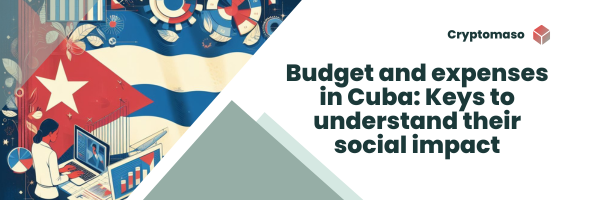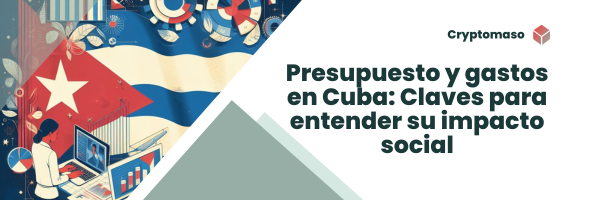

English Greetings to the whole community, there is a lot of talk about the Cuban economy or what it should be, but I think you should have some points of reference to try to decipher how the whole economic framework moves in Cuba.
Let's try to go by part, I am sure, if you showed interest in the subject before, that somewhere on the internet they told you that it is a strongly centralized economy and that about 2 years ago with greater force, but less speed a process of decentralization began, which means passing many functions from the central level or the ministries to the municipalities, giving powers to local governments, which are already in the constitution and laws, but in practice has not become a reality.
These powers mean that the budgets for expenditures and the plans for the economy are built from the municipality and are proposed for approval by the Ministries of Finance and Economy, which in turn, after giving the go-ahead, present them for approval by the National Assembly of People's Power in Cuba.
As I said before, 2022 and 2023 were good years to implement this planning system from the budget, the approval of the plans of the economy in the business sphere has not yet achieved this level of adjustment at the local level, the budget, although not in all its items, is quite similar to the proposals made.
Notes on the process of decentralization (January 2023) 👇👇.
And what are the strong points of these budgets, is the collection of income and ensuring the level of expenditure that allows to assume the activities of the budgeted sectors such as culture, sports, health and free education, the latter being the ones that concentrate the largest expenditure within the programmed, along with social assistance and subsidies to the productive sectors, especially retail trade.
An example of these subsidies is that a mother who benefits from the sale of fluid milk to her child pays 0.25 pesos for 1 liter of milk and the budget subsidizes 38.00 pesos and 6.00 pesos in transportation and transport costs, which means that the state assumes 43.75 pesos for each liter that is granted by this program, I also explain that in Cuba there is a system of distribution for each Cuban with the same allocation of resources, whether they have equal economic position.
For an economy that depends heavily on imports, obtaining foreign currency is fundamental, which has been left to tourism services, the sale of nickel, pharmaceuticals and medical services. In short, this is where the sources of income are concentrated, which do not have an impact and which must ensure the import expenses of that family basket for 11 million and a little more Cubans every month. A difficult task in these times.
Thank you for coming this far, I look forward to your comments on how it works in your country.


Español Un saludo para toda la comunidad, mucho se habla de la economía cubana o lo que debería ser, pero considero que debes tener algunos puntos de referencia para intentar descifrar como se mueve todo el entramado económico en Cuba.
Tratemos de ir por parte, seguro estoy, si antes mostró interés en el tema, que por ahí en internet le dijeron que es una economía fuertemente centralizada y que hace unos 2 años con mayor fuerza, pero menor velocidad se comenzó un proceso de descentralización, lo que significa pasar muchas funciones del nivel central o sea los ministerios a los municipios, dando facultades a los gobiernos locales, que ya están en la constitución y las leyes, pero que en la práctica no se ha hecho realidad.
Esas facultades significan que los presupuestos para gastos y los planes de la economía se construyen desde el municipio y se propone a la aprobación de los Ministerios de Finanzas y de Economía, los que a su vez después de dar el visto bueno, presentan a la aprobación de la Asamblea Nacional del poder Popular en Cuba.
Como dije anteriormente el 2022 y 2023 fueron buenos años para implantar ese sistema de planificación desde el presupuesto, la aprobación de los planes de la economía en la esfera empresarial todavía no logra ese nivel de ajuste a nivel local, el presupuesto aunque no en todas sus partidas se parece bastante a las propuestas realizadas.
Notas sobre el proceso de descentralización (enero 2023) 👇👇
Y cuáles son los puntos fuertes de estos presupuestos, pues la captación de ingresos y asegurar el nivel de gastos que permita asumir las actividades de los sectores presupuestados como la cultura, el deporte, la salud y educación gratuita, siendo estos últimos los que concentran un mayor gasto dentro de los programados, junto a la asistencia social y subsidios a los sectores productivos en especial comercio minorista.
Un ejemplo de estos subsidios es que a una madre beneficiada con la venta de leche fluida a su niño paga 0.25 pesos por 1 litro de leche y presupuesto subsidia 38.00 pesos y 6.00 pesos en gastos de acarreo y transporte, lo que significa que el estado asume 43.75 pesos por cada litro que se otorgue por este programa, también de paso le explico que en Cuba existe lo nombrado Canasta Familiar Normada un sistema de distribución para cada cubano con la misma asignación de recursos, tenga o no igual posición económica.
Para una economía que depende mucho de la importación, la obtención de divisas es fundamental, lo que se ha dejado a los servicios del turismo, la venta de níquel, los productos farmacéuticos y los servicios médicos. En fin, en eso se concentra las fuentes de ingresos, que no logran impacto y que deben asegurar los gastos de importación de esa canasta familiar para 11 millones y poco más de cubanos cada mes. Una tarea difícil en estos tiempos.
Gracias por llegar hasta aquí, espero tus comentarios de como funciona eso en tu país.
- Translated with DeepL.com (free version)
- Banner created in canva.com